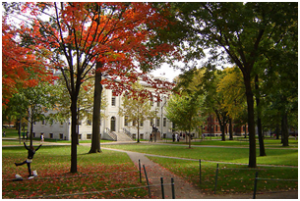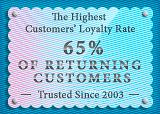
There Are Reasons to Be Hopeful While Applying to College
Despite the price hikes and raises in tuition fees all over the country, recent studies have shown that there are still reasons to be hopeful during the application to college—in fact, these set-backs may have actually given birth to more favorable circumstances.
 A recently conducted study shows that the stringent processes in the Ivy League schools such as Harvard, Yale and Stanford have caused a rise in the competency and popularity of former “second-choice” colleges like NYU and the University of Southern California (USC).
A recently conducted study shows that the stringent processes in the Ivy League schools such as Harvard, Yale and Stanford have caused a rise in the competency and popularity of former “second-choice” colleges like NYU and the University of Southern California (USC).
The rises in tuition fees of Ivy League universities have also been shown to help other state universities make the leap from regional to national status. The sudden influx of student applications at state universities have also forced a broadening in the curriculum of most colleges throughout the country as well as a drive toward raising the quality of their faculty, material and facilities.
Over the past ten years, studies have shown a broadening in the applications of students. Whereas Ivy League schools used to have the majority of applications, nowadays more students are applying to non-Ivy universities both inside and outside their states, causing a higher admission rate and also better interstate relations. In the 1990s, a student from the Midwest might apply to a couple of back-up local colleges and two ivy league schools as the top choices. These days, recent developments have made it so that a student from the Midwest now applies to a number of establishments throughout the country (like the California State University or the University of Chicago) as equivocally desired options. This causes higher student satisfaction as well as a better distributed student populace.
Furthermore, the change in concentration of the student applications from the Ivy League to other institutions has also raised the chances of students getting into college. These days, there are hardly any high school seniors who apply to college and don’t get in anywhere—a phenomena that was rampant in the 1990s.
This recent trend also affects the quality of life of different university graduates—whereas in the past, prestigious companies would only strictly hire students from the Ivy League, nowadays studies show that previously overlooked establishments like the University of Oregon, Rice University, The University of California Berkeley and Vanderbilt University are all rising as competitive options for recruiters and employers.
The attention which numerous universities and colleges all over the nation are now getting has also improved financial aid prospects, there being lower ceilings with regard to qualifying for financial aid and bigger budgets to accommodate a bigger percentage of the student population.
There has also been a fluctuation in how high school students are taught to prepare for university education. In the past, school administrators were set on having students pick out an establishment (say, Princeton or Yale) at an early age and have them “fit” themselves to the university (for example, if a student wants to get into Harvard and they value extra-curricular work in gymnastics, the student would go for a gymnastics elective—regardless of whether or not he/she were actually interested in that subject).
Nowadays, it’s the other way around—students are made to figure out what they’re good at and what they’d like to study and then look for a group of schools which might fit their different educational criteria (e.g. a good music program, a progressive social sciences curriculum, an emphasis on the humanities) and desires (e.g. close to home, near the coast, etc.).
These recent shifts have tipped the balance of high school hierarchies greatly, causing a trickle-down effect with regard to the end of the Ivy League era. Whereas the top high schools used to only emphasize the need to get into the Top 5, namely Yale, Princeton, Stanford, Brown, and Columbia, more and more upper-crust high schools are also allowing their students to apply to other institutions which they may not even have considered a decade or two ago.
With this broadening in competencies and eligibility, studies also show that while there are still a lot of students “opting out” of a college education in exchange for more entrepreneurial endeavors, the rate of students applying and getting into college has also risen significantly.
 + 1-888-827-0150
+ 1-888-827-0150 + 44-20-3006-2750
+ 44-20-3006-2750









